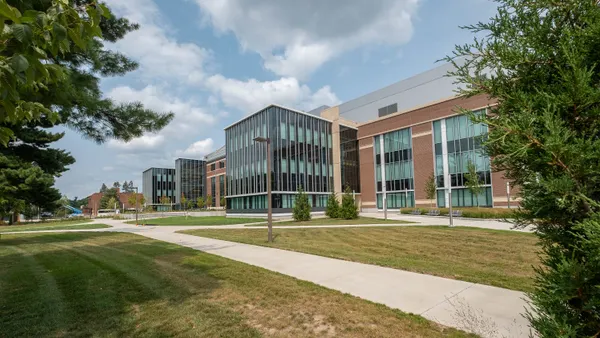Dive Brief:
- Homebuilders are increasingly looking to farm-centered communities, also called "agrihoods," as a way to draw in residents, according to MarketWatch reported.
- In these developments, farms aren't razed to make way for housing, but instead are incorporated into neighborhoods, allowing residents to raise farm animals, grow food, reconnect with nature and be a part of a community.
- Houses built in these farm environments come at a premium, however, due to the lower density of homes and the sustainable features that homebuilders often include as standard.
Dive Insight:
According to the Urban Land Institute, agrihood developments, originally called conservation communities, have increased from a handful to more than 200 in just the span of 20 years. In fact, some developers believe that when it comes to popular amenities, these farm-focused developments could soon give golf course communities a run for their money.
Major homebuilders are adding garden or farm features to their developments as well. D.R. Horton and PulteGroup’s Del Webb division have experienced success with their agrihoods in Texas and California, and Texas billionaire and former presidential candidate H. Ross Perot Jr. built one of the first residential farming communities near Dallas.
Late last year, the Santa Clara City Council chose to fund an agriculture-based, mixed-income development to tackle its affordable housing issues rather than cheaper alternatives. The Core Companies concept won over advocates who wanted to see a return to the property's original agricultural use, as well as city council members who referred to the 1.5-acre garden element as the "first of its kind for Santa Clara."











